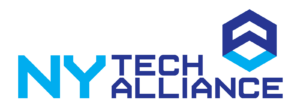Connect with Us
602 Park Point Drive, Suite 225, Golden, CO 80401 – +1 303.495.2073
© 2025 Medical Affairs Professional Society (MAPS). All Rights Reserved Worldwide.
Link will be added when available

At the end of this series of podcasts, the participant should be able to:




Raffy Dakessian 0:01
Welcome to the medical affairs professional society Podcast Series. Today, the medical communications focus area working group is bringing you a multi part podcast series about online virtual conferences. In this first podcast, we will discuss adapting to the virtual conference experience. I am rafita kacian, and I’ll be moderating today. I currently serve as a member of the medical communications focus area working group, and the head of oncology, scientific communications, and medical information department for Novartis, Japan. The views expressed in this recording are those of the individuals and do not necessarily reflect on the opinions of maps or the companies with which they are affiliated. This presentation is for informational purposes only, and is not intended as legal or regulatory advice. We encourage you to engage in conversations about online or virtual conference experiences with other maps members via the community portal on the maps website. Simply log in with the email address and password associated with your maps account and click on the discussion tab. Then scroll down to medical and scientific communications to post a question or review previous postings. The objective of today’s podcasts are to understand how the in person conference experience has changed and adapted to the virtual environment to discuss styles and formats that uniquely suit the online virtual conference experience, and to consider factors for enabling networking and interaction between attendees and speakers in online virtual conferences. So let’s begin. I’d like to thank today’s panelists and diesel donya for sharing their expertise with the maps membership. Andy, would you like to give yourself an introduction?
Andy Saldaña 1:46
Yeah, absolutely. Thanks for having me. My name is Andy Saldaña. I’m the executive director of New York tech Alliance. New York tech Alliance is a nonprofit organization that is driving access, Equity and Inclusion within the New York tech ecosystem, with the goal of making the tech ecosystem as reflective of the city itself. And we do a lot of events in impasse roles. I’ve also been a founder of a startup called Live cube, as well as an event production manager for a large tradeshow company called united as media.
Raffy Dakessian 2:23
Great. Thanks for being here with us today. Andy. So can you tell us what trends you’re seeing in online conference planning? It must have been quite an impactful year over the past year with such a shift to digital with the pandemic. So what is what is that done to the way that scientists and technologists are interacting online?
Andy Saldaña 2:47
Yeah, absolutely. I think, at the beginning of the pandemic, everybody was very new to the whole virtual experience connecting online connecting through video platforms like zoom on a regular basis. And it really, I saw a pause in conference activity, as people were trying to figure out how to translate those to the in person events into online experiences. And, you know, over the first couple of months, it was really just about connecting people connecting with as many people as as quickly as you could to replace the experience of some of those conferences. And then as, as we’ve been, in, during this pandemic, for for quite some time, I’ve seen the trends kind of shift to actual focus on providing a very virtual first experience. And so taking into accounts, all the things that are necessary in order to plan a very successful attendee experience. And it’s it’s very different type of planning that you have to do for virtual experience than you have to do for an in person experience.
Raffy Dakessian 3:55
I can imagine, I mean, what are some of those aspects? How do you think about fostering, like networking activity where you might have somebody at a live conference, they’re able to strike up conversation with the person next to them? Or if you’re looking at the same presentation, you can ask them afterwards? What were your impressions? If you’re looking at a poster board, you can ask them, What do you think? Or, or how does this piece of data affect you? When we’re online? Of course, we don’t have that we’re generally alone in a room. Are there techniques or formats that you’ve seen that can help foster, let’s say, just the one to one interaction at a conference?
Andy Saldaña 4:39
Yeah, there’s so many tools that conference organizers are using to create and mimic that in person, feel an event. And so a lot of the platforms such as hoppin or there’s another platform called brela. They, they provide like a general session room and breakout rooms and so If you’re looking at the conference agenda, just like you would an in person events, and you pre select everything, and then during each session, there’s chat features that pop up. And one of the biggest tips that I have for any attendee to one of these virtual conferences, is to make sure that they’re taking advantage of those chat features, that you come prepared with your profile pre prefilled, in that you complete it as much as possible that you put in exactly what it is that you’re looking for, what is your ask what is your offer, and that you, you know, you flex the full capacity of what that tool can do. So if it’s a matchmaking tool, like brella, where you can pre select certain industry types, and segments within the industry and connect with other people that align with you make sure that you’re doing all of that work before the conference begins. If it’s a if it’s a very general platform, like a zoom meeting, even, what I recommend is opening up that chat, dropping in your your name, position, LinkedIn profile. And that way, there’s a piece that people can connect with you on. And as long as you you’re making sure that you’re putting that that little effort in and each experience, it’s helping to network. And then there’s a ton of networking tools available that you can use to augment the experience. One in particular is called hyoe. Social, which is an interesting mobile app that keeps all of your connection information and allows you to network within a city and events or opportunity. And then just again, just making sure that you have your your virtual business card ready, which is basically your LinkedIn profile, make sure it’s up to date, make sure it’s ready to go. And that’s the easiest way to share information.
Raffy Dakessian 6:55
I think that makes a lot of sense. It’s kind of like what you put into it will be what you get out of it. If you’re interested in interacting, meeting more people, you need to have some basic information readily available about yourself and signal in a way that you’re interested in, in talking about yourself in a way that you’re interested in learning about another person.
Andy Saldaña 7:19
Exactly. And also, you know, for for event organizers themselves when they’re looking at providing the virtual experience it they have to look at it as like, what is the goal for that session. And I think that that’s a big shift from, you know, planning an in person event where it’s what is the goal of the overall experience for the conference, because you’re actually bringing people to a place, they’re kind of sequestered more or less within that space. Their whole job is to network in that space, over the time of the conference, right? And in, in a virtual setting, you’re in your own home office, you’re, you know, as an attendee, you’re combating the urge to check your email to schedule other meetings do other work. And I think conference, organizers really need to take that into account as they’re planning these experiences. And what I found is that you keep the sessions as short as possible, number one, that if it is very dense information that you break it up into easy, digestible sessions that you and think about it like how long would you want to sit in front of the screen for an extended period of time, right. And as long as you are thinking about how to break that contact, content up into chunks, then you can program an entire program that allows you to be flexible and allows the attendee experience to be flexible. One of my favorite things that I’ve seen this year is the pre recorded and live kind of mix. And so a lot of conference organizers will will ask, you know, the majority of their speakers to pre record a 10 minute to 15 minute talk. And then, throughout the day, all those talks are scheduled for the breakouts, right. And then the plenary is live. And so the main plenary is a live streamed event. And that, you know, in general, when you’re at a live conference, that usually takes about what, two two and a half hours at the beginning of the day. So you set that the same and then it allows people to come in engage at the beginning. You add some networking features, like the chat functionality that I was talking about within that so people can talk during the keynote. And then and then, you know, the rest of the agenda throughout the conference, you break it up and so people are able to come in and out at their leisure, and potentially watch more content than they ever would in person
Raffy Dakessian 9:56
kind of having elements of pre recorded content live streaming, interactive features and functions like chats and, and even profiles for attendees, like just a little bit of all of those things together makes a comprehensive experience.
Andy Saldaña 10:15
I think so and just, you know, designing that for the modern, modern times and understanding attention spans capacities, and just the limit to which a person is willing to participate and engage. And it is really different for different things, right. Like I’ve I’ve attended lunchtime talks, which I love, because I put them on, it’s like listening to a podcast. And there’s no engagement required for myself. And then I’ve attended just extremely network focused events. So networking events, and those are you have to pay attention to what’s happening in the room, you have to be fully there. And so it just understanding how that dynamic really works for different people, and the attendees really matters.
Raffy Dakessian 11:06
Terrific. Thank you so much, Andy, this has been really great, nice to hear about what goes through the mind of a conference planner, and also what goes through our minds as attendees. So thanks so much for joining us today.
Andy Saldaña 11:18
Absolutely.
Raffy Dakessian 11:19
This concludes the first podcast in a series on adapting to the virtual conference experience. Again, I would like to thank our guests Andy cell donya from the New York technology Alliance for joining us on this thought provoking discussion. If you’re a maps member, thank you for your support of maps. If you’re not yet a maps member and would like to access additional resources in this area, please visit the maps website to explore joining today at medical affairs dot o RG forward slash membership. This concludes today’s discussion. Thank you for listening
602 Park Point Drive, Suite 225, Golden, CO 80401 – +1 303.495.2073
© 2025 Medical Affairs Professional Society (MAPS). All Rights Reserved Worldwide.

 Leadership Perspectives 4: Medical Affairs Career Development
Leadership Perspectives 4: Medical Affairs Career Development